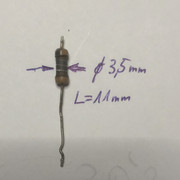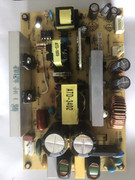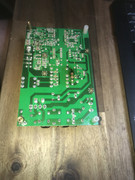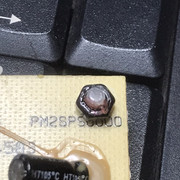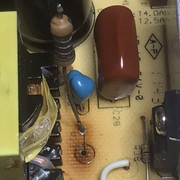DTS D810K013DZKB4 Replacement Procedure Onkyo Pioneer Others
Mar 12, 2018 20:18:13 GMT -5
ralph likes this
Post by Admin on Mar 12, 2018 20:18:13 GMT -5
This post is credited and thanks to tjmotter
"my pioneer vsx-921-k has the all known ue22 error.. Already tried to heat the dsp chip up, but sadly after a few weeks the same ue22 returned flickering on the display. Is it an option to replace the current 'B' chip with the newer D810K013DZKB4?"
Yes, I have done this many times on Onkyo receivers. The "D" rev part is relatively easy to find on eBay and sells for ~$30 US. The "D" rev is electronically identical to the "B" part so it is a direct replacement. Most of the supply is based in China but I have never had a problem with these parts. Many people complain that China sells counterfeit parts and while this is true for transistors, the DSP chip is too advanced to be copied so I find that they are fine.
The "masking off with heat resistant tape like Kapton" and aluminum foil stays the same. You should also plan to preheat the bottom of the board to 120 degrees with a board heater (like this one:
www.circuitspecialists.com/csi835b.html
Once the board heater reaches temperature, I shut it off and apply the heat gun to the chip from the top. After 1 min at ~435 degrees you can use a suction device - many advanced soldering irons have this such as this one:
www.ebay.com/itm/Aoyue-968A-4-in-1-Digital-Soldering-Iron-Hot-Air-Station-Complete-Kit-USA-NEW/322948008987?epid=2255917850&hash=item4b31338c1b:g:WPkAAOSwmhJZtpAa
You use the suction to remove the old chip. Next, let the board cool to room temperature and once cooled, squeeze some "no clean flux" over the pads and use solder wick to clean all of the excess solder off of the pads. Next, clean the area with isopropyl alcohol. Next, spread a very thin layer of "no clean flux" on the pads and align the new chip to fit perfectly within the white outline drawn on the board. Reheat the bottom of the board to 125 degrees (turning the board heater off once you get to this temperature) and apply the heat gun to the top of the chip again at ~435 degrees for 1 minute. Once the board cools down you should be able to visually inspect the chip to see if the solder balls have compressed. If so, you can re-install the board in the receiver and it should work. If not (if they still look round instead of "squished") you will want to try heating it up again.
I should note that I use an oven probe to detect when then the bottom of the board reaches 125 degrees simply because a board heater places the board about 10cm above the heat so the reading on the front of the unit is not accurate.
"my pioneer vsx-921-k has the all known ue22 error.. Already tried to heat the dsp chip up, but sadly after a few weeks the same ue22 returned flickering on the display. Is it an option to replace the current 'B' chip with the newer D810K013DZKB4?"
Yes, I have done this many times on Onkyo receivers. The "D" rev part is relatively easy to find on eBay and sells for ~$30 US. The "D" rev is electronically identical to the "B" part so it is a direct replacement. Most of the supply is based in China but I have never had a problem with these parts. Many people complain that China sells counterfeit parts and while this is true for transistors, the DSP chip is too advanced to be copied so I find that they are fine.
The "masking off with heat resistant tape like Kapton" and aluminum foil stays the same. You should also plan to preheat the bottom of the board to 120 degrees with a board heater (like this one:
www.circuitspecialists.com/csi835b.html
Once the board heater reaches temperature, I shut it off and apply the heat gun to the chip from the top. After 1 min at ~435 degrees you can use a suction device - many advanced soldering irons have this such as this one:
www.ebay.com/itm/Aoyue-968A-4-in-1-Digital-Soldering-Iron-Hot-Air-Station-Complete-Kit-USA-NEW/322948008987?epid=2255917850&hash=item4b31338c1b:g:WPkAAOSwmhJZtpAa
You use the suction to remove the old chip. Next, let the board cool to room temperature and once cooled, squeeze some "no clean flux" over the pads and use solder wick to clean all of the excess solder off of the pads. Next, clean the area with isopropyl alcohol. Next, spread a very thin layer of "no clean flux" on the pads and align the new chip to fit perfectly within the white outline drawn on the board. Reheat the bottom of the board to 125 degrees (turning the board heater off once you get to this temperature) and apply the heat gun to the top of the chip again at ~435 degrees for 1 minute. Once the board cools down you should be able to visually inspect the chip to see if the solder balls have compressed. If so, you can re-install the board in the receiver and it should work. If not (if they still look round instead of "squished") you will want to try heating it up again.
I should note that I use an oven probe to detect when then the bottom of the board reaches 125 degrees simply because a board heater places the board about 10cm above the heat so the reading on the front of the unit is not accurate.




